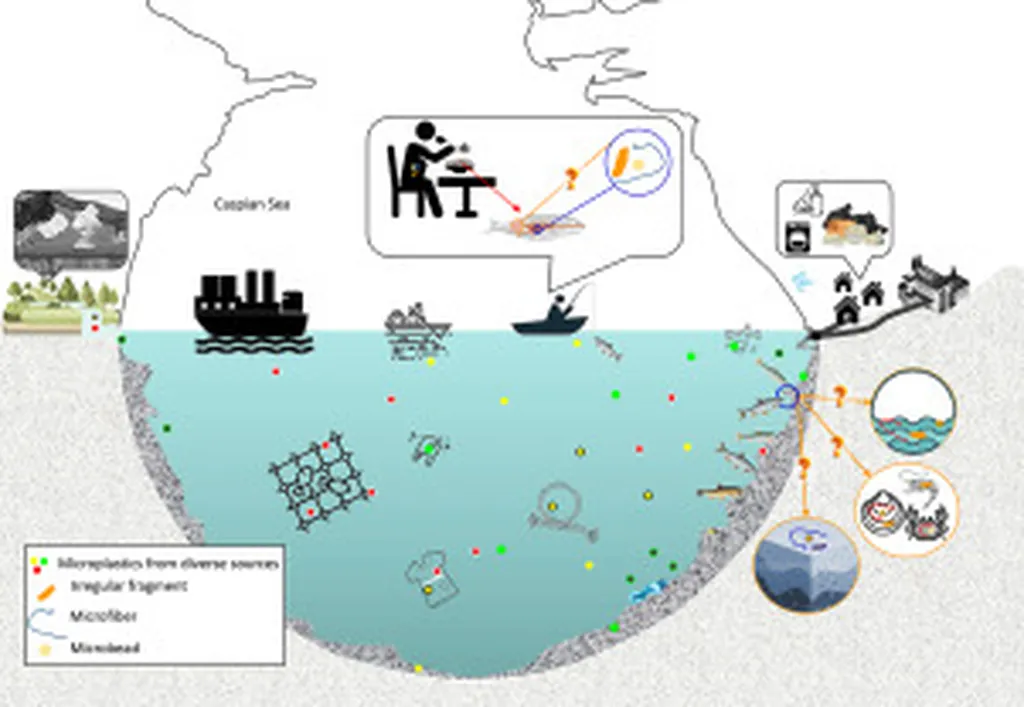In the vast and often invisible world of aquatic ecosystems, fish skin mucus plays a crucial role in defending against pathogens. A recent study published in *Slovenian Veterinary Research* has shed light on the antimicrobial properties of the skin mucus from Caspian kutum (Rutilus frisii kutum), a fish species native to the Caspian Sea. The research, led by Milad Adel from the Department of Aquatic Animal Health and Diseases at the Iranian Fisheries Science Research Institute (IFSRI), reveals promising insights that could have significant implications for the agriculture and aquaculture sectors.
The study focused on the bactericidal and fungicidal activities of skin mucus collected from both male and female Caspian kutum specimens. The mucus was tested against six pathogenic bacterial strains, including Streptococcus iniae, Yersinia ruckeri, Staphylococcus aureus, Listeria monocytogenes, Pseudomonas aeruginosa, and Escherichia coli. Additionally, the researchers assessed the mucus’s effectiveness against four pathogenic fungi: Saprolegnia sp., Fusarium solani, Candida albicans, and Aspergillus flavus.
The results were intriguing. The mucus exhibited the highest antibacterial activity against Yersinia ruckeri and the lowest against Streptococcus iniae. Similarly, the highest fungicidal activity was observed against Fusarium solani, while the lowest was against Candida albicans. Notably, the mucus from female fish showed higher antimicrobial activity compared to that from male fish for most tested strains.
“This difference in antimicrobial activity between male and female fish is quite fascinating,” Adel remarked. “It suggests that female Caspian kutum might have evolved more robust defense mechanisms, possibly due to their role in reproduction and the need to protect their offspring.”
The study also determined that minimum inhibitory concentrations of mucus, ranging from 125 to 500 μg/L, were sufficient to inhibit the growth of the selected bacterial and fungal pathogens. This finding highlights the potential of fish skin mucus as a natural and effective antimicrobial agent.
In addition to antimicrobial activity, the researchers analyzed the enzymatic activities of alkaline phosphatase, lysozyme, protease, and esterase in the mucus samples. While the activities of these enzymes were generally similar between male and female fish, lysozyme activity was notably higher in the mucus of female fish.
The commercial implications of this research are substantial. The agriculture and aquaculture industries are constantly seeking innovative and sustainable solutions to combat pathogenic outbreaks. The findings suggest that the skin mucus of Caspian kutum, particularly from female specimens, could be a valuable source of novel antimicrobial compounds. These compounds could be developed into natural and effective treatments to protect farmed fish and other agricultural animals from infections, reducing the reliance on synthetic antibiotics and chemicals.
Moreover, the study opens up new avenues for research into the biological differences between male and female fish, not just in terms of antimicrobial defenses but also in other physiological and immunological aspects. Understanding these differences could lead to more targeted and effective strategies for fish health management.
As the world grapples with the challenges of antibiotic resistance and the need for sustainable agricultural practices, research like this offers a glimmer of hope. By harnessing the natural defenses of aquatic organisms, we can develop more eco-friendly and effective solutions to protect our food sources and ensure the health of our ecosystems.
The study, led by Milad Adel and published in *Slovenian Veterinary Research*, represents a significant step forward in our understanding of fish skin mucus and its potential applications. As Adel noted, “This research is just the beginning. There is so much more to explore in the world of aquatic biology, and each discovery brings us closer to a more sustainable and healthier future for all.”

